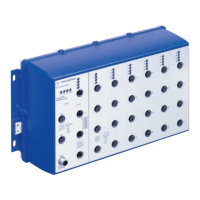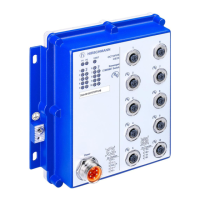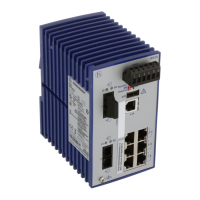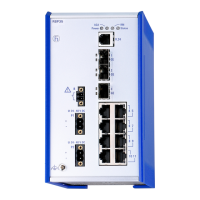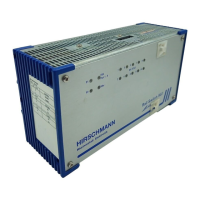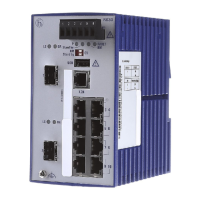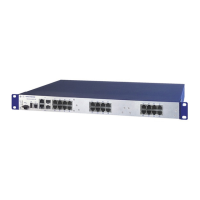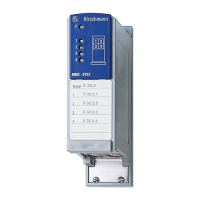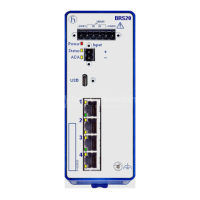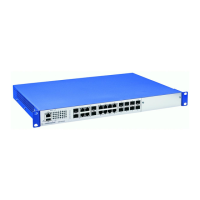Installation OS20/OS30
Release
03
06/2015
15
1.5 Ethernet ports
You can connect end devices and other segments to the device ports using
twisted pair cables or optical fibers (F/O).
The OS20 devices have eight 10BASE-T/100BASE-TX ports (M12 sockets)
and two 100 Mbit/s FX ports for connecting network segments or terminal
devices (product code items 8+9, see table 1).
The OS30 devices have eight 10BASE-T/100BASE-TX ports (M12 sockets)
and two 1000 Mbit/s FX ports for connecting network segments or terminal
devices (product code items 8+9, see table 1).
The medium and connection types for the 1st and 2nd uplink ports are freely
selectable (product code items 12+13 and 14+15, see table 1).
You find information on pin assigments for making patch cables here:
“Pin assignments” on page 16
1.5.1 10/100 Mbit/s twisted pair port
This port is designed as an 4-pin M12 socket.
The 10/100 Mbit/s twisted pair port offers you the ability to connect network
components according to the IEEE 802.3 10BASE-T/100BASE-TX standard.
This port supports:
Autonegotiation
Autopolarity
Autocrossing (if autonegotiation is activated)
100 Mbit/s half-duplex mode, 100 Mbit/s full duplex mode
10 Mbit/s half-duplex mode, 10 Mbit/s full duplex mode
Delivery state: Autonegotiation activated
The socket housing is electrically connected with the device housing.
1.5.2 100 Mbit/s F/O port
Only OS20 device variants have 100 Mbit/s F/O ports.
This port is an SFP slot.
The 100 Mbit/s F/O port offers you the ability to connect network components
according to the IEEE 802.3 100BASE-FX standard.
This port supports:
Full or half duplex mode
Default setting: Full duplex
